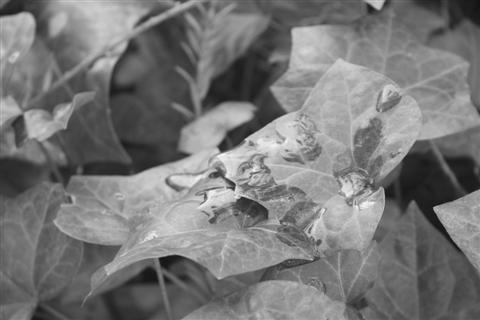
RETURN TO HOME PAGE
FEEDBACK

|
April 2006
RETURN TO HOME PAGE FEEDBACK |
Islais Creek: From Stream to Sewer
By Kevin Cutler
Photos by Beverly Tharp
From its source on the southern slope of Twin Peaks, the north fork of Islais Creek begins its existence as a charming little rivulet, a nostalgic bit of nature tumbling southeast through Glen Canyon Park. By the time it hits San Francisco Bay, the creek has been bullied through culverts and buried beneath streets, emerging finally in the Bayview as a sewer-choked channel bearing little resemblance to anything natural. The geographic distance between Glen Canyon's urban oasis and the Bayview's "S--t Creek" (an unfortunate nickname from the 1950s) is short--approximately three miles. The transformative journey taken by Islais Creek, however, is nothing short of remarkable.

To grasp the dramatic alterations foisted upon Islais Creek, consider the journey of a single drop of San Francisco rainwater. After landing on Twin Peaks, the droplet rolls down towards Glen Park, enters the canyon, and joins with other flows of water to form Islais Creek (likely named for the Indian word is-lay, meaning wild cherry). Up to this point, the drop has generally followed its natural course, moving in much the same manner as rain falling on Twin Peaks since time immemorial.
Within Glen Canyon, the drop is exposed to a mixture of endemic and invasive species of plants and animals, yet the overall experience remains quite natural. As the drop continues its journey southeast towards the lower section of the park, it courses through a medieval battlefield of Rain Bird sprinkler flags entrenched in the banks of the creek, signifying the location of freshly planted myrtles, shrubs, elderberries, and other native plants--signs of continued efforts to improve the natural environment. Within sight of the Glen Canyon Recreation Center, the drop plummets suddenly into a storm drain. Heretofore, the drop has followed a path relatively unimpeded by the whims of mankind. However, once the drop plunges into the culvert, it leaves behind any semblance of its natural course and surrenders itself to modernity. Having been thrust underground into a culvert, the droplet now becomes part of a subterranean concrete river flowing roughly along the path of northbound 280.
At this point, we should set aside the droplet's epic journey for a moment and discuss a bit of San Francisco history, specifically the reason for Islais Creek's unceremonious burial. In the 1870s, the area around Islais Creek was known as Butchertown due to the large number of slaughterhouses operating there. The meat packers used the creek as a repository for blood and offal. Meanwhile, the neighborhoods surrounding Butchertown also dumped garbage and human waste into the ravine. Combined, these practices left the stream somewhat less than pristine, earning Islais Creek the moniker "S--t Creek" and compelling city officials to build a culvert to swallow up the whole mess. Today, the ancestral Islais watershed is nowhere to be found, which means the drop of Twin Peaks water now moves through a cement pastiche of Islais Creek.
Towards the end of its voyage across southeast San Francisco, we find the droplet being deposited into the Islais Creek Channel, an artificial creation near the intersection of Cesar Chavez and Third streets bearing no relation to the former outlet of Islais Creek.

After being thrust underground and shoved into a canal, the droplet of Islais Creek water suffers one final indignity before being dumped into the Bay. As a result of a failed attempt by Muni to run a conduit underneath the channel in 2001, the sewer main beneath Islais Creek ruptured and flooded the channel with sewage, a catastrophe which still plagues the stream. In essence, the droplet ends its journey being dragged through the sewer.
The physical changes experienced by Islais Creek from its source to its outlet are, unfortunately, representative of the treatment of waterways throughout San Francisco. Of the nine streams present in San Francisco, almost all have been diverted or forced through culverts.
The paucity of naturally flowing water in San Francisco makes Glen Canyon Park's Islais Creek all the more exceptional, for it is one of the last naturally occurring, unobstructed streambeds in the entire city. One can hope the stream's uniqueness within an urban setting will serve as an example of the beauty of conservation, perhaps one day making Islais Creek not the only one of its kind.
* * *
Kevin Cutler is a freelance writer based in Oakland. His work has been published by California Wild, Bay Nature, Glen Park News, and Not for Tourists. Previously, he worked as an elementary school teacher in the East Bay.
LET BYLINES BE BYLINES
The Noe Valley Voice welcomes submissions of first-person essays. Mail manuscripts to Bylines, Noe Valley Voice, 1021 Sanchez Street, San Francisco, CA 94114. Or send e-mail submissions to bylines@noevalleyvoice.com. Please include your name, address, and phone number. Thank you.